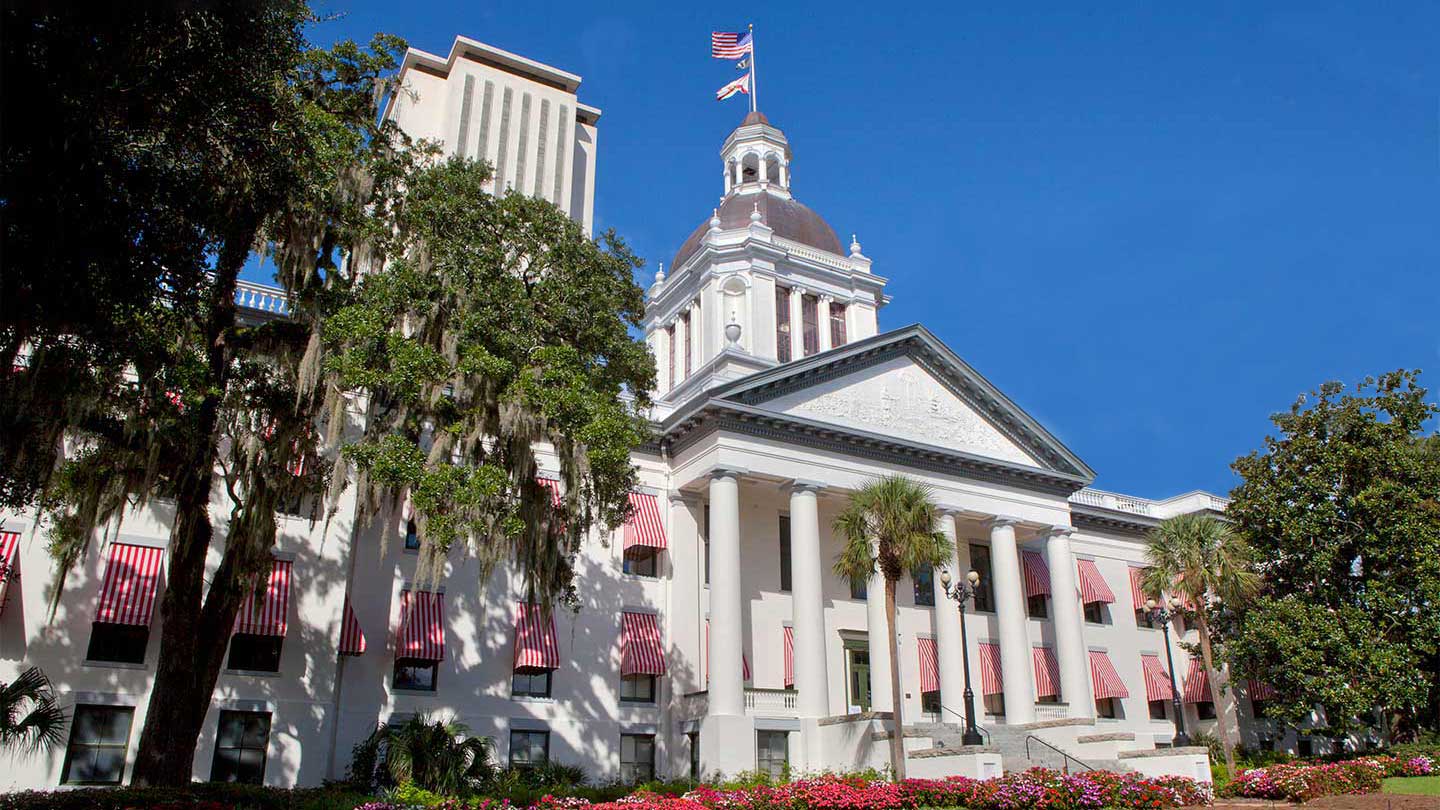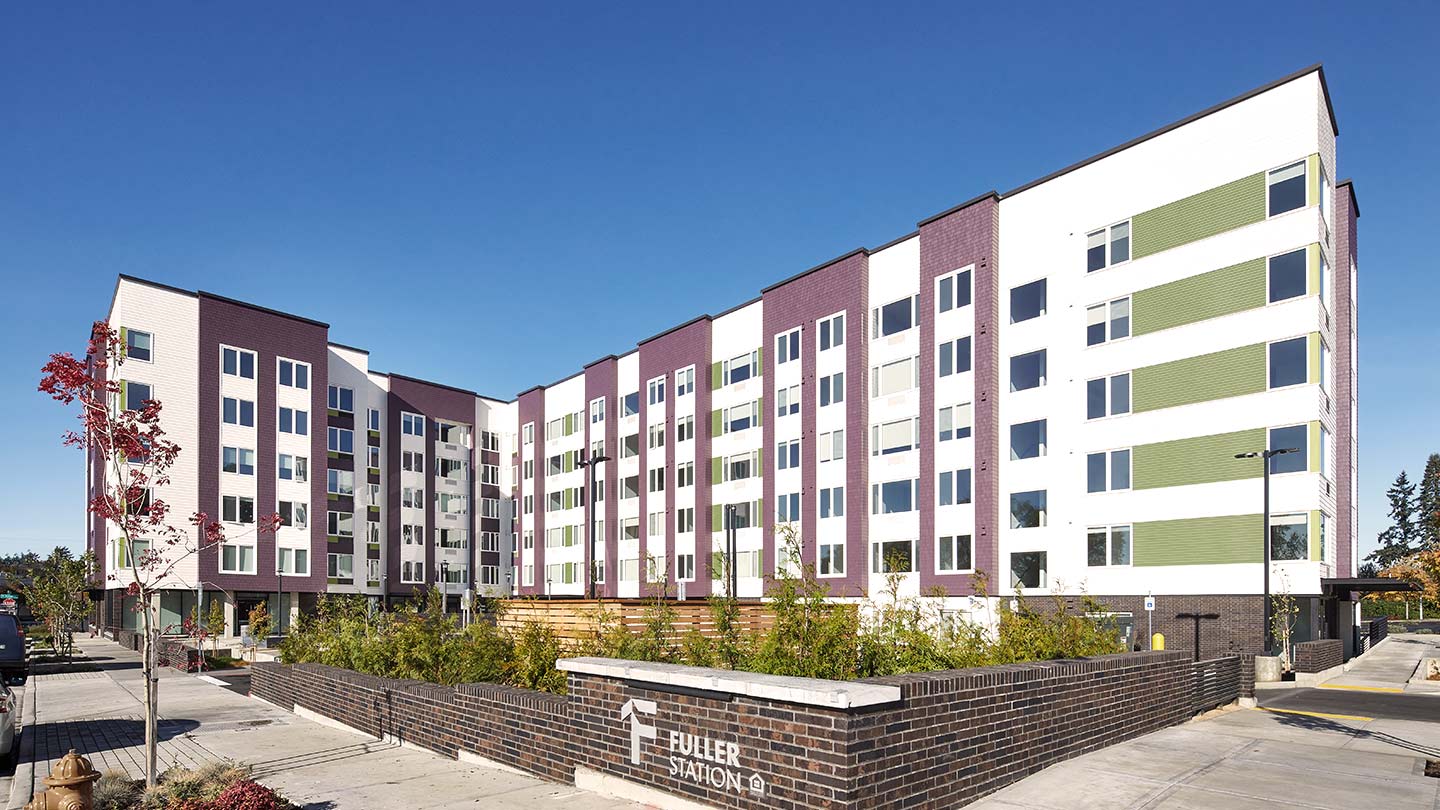
8 min read
The affordable housing statistics in Florida are staggering. The Sunshine State has only 25 affordable and available rental homes for every 100 extremely low-income renters, according to The Gap report from the National Low Income Housing Coalition. Most extremely low-income Florida renters—82%, the second highest in the country—are severely cost-burdened.
Some of the major challenges to solving Florida’s affordable housing crisis include:
- Increased migration and rising home costs
- Climate change and property insurance challenges
No single solution will solve these issues. But across the state there are promising efforts to address the affordable housing shortage, including the recently passed Live Local Act, public-private developments, adaptive reuse projects and more.
Learn more about these challenges and how Florida affordable housing developers are tackling them.
Increased migration and rising home costs
Florida boasts a warm climate, job opportunities and no state income tax, making it a popular moving destination. In 2022, Florida gained a net population of 249,064 people, according to U.S. Census data—the highest net migration increase among all 50 states.
The business-friendly state is also a popular location for major corporations, such as Blackstone, Lockheed Martin and Paysafe. According to U.S. Securities and Exchange Commission data, 39 corporations moved their headquarters to Florida in 2022 and 2023, the highest net gain of any state.
The demand has helped drive up home prices across the state. As of May 2024, home prices in Florida were up 3.1% year over year, according to Redfin. In the state’s major metros, home prices are even higher.
| Florida city | 2024 median home price | Year-over-year increase |
|---|---|---|
| Daytona Beach | $295,000 | 18% |
| Jacksonville | $315,000 | 5% |
| Miami | $608,000 | 8.10% |
| Orlando | $405,000 | 8.50% |
| Tallahassee | $285,000 | 7.40% |
| Tampa | $460,000 | 7.70% |
| Sarasota | $569,000 | 9.40% |
Source: Redfin
Impact on Florida affordable housing: The climbing costs of purchasing a house are pricing out many would-be homebuyers, increasing demand for multifamily properties. The increased demand has also led to higher rent prices that make it increasingly difficult for low-income and extremely low-income renters to find affordable, attainable housing.
Workforce and low-income renters are often forced to the edges of the city and into the suburbs, locations that aren’t always close to jobs and can create added expenses. “The suburban sites often become a ‘car trap,’ as every household must own one or two reliable cars,” said Shawn Wilson, president and CEO of Blue Sky Communities, a developer with properties concentrated in the Tampa area. “The car winds up being very expensive and impedes residents’ ability to save.”
Natural disasters and property insurance challenges
Florida is no stranger to hurricanes and other costly natural disasters. In 2022, Hurricane Ian alone caused over $112 billion in damages. In response to the growing costs, many insurers no longer operate in the Sunshine State and other areas prone to natural disasters, and those that remain offer policies at much higher costs.
Luxury and market-rate housing providers can offset increased insurance costs with rent increases, but affordable housing operators can’t because of their properties’ rent regulations.
To counter insurance increases, we’ve seen Florida affordable housing operators take several approaches, including:
- Paying higher deductibles: To help keep their monthly insurance costs down, some affordable housing operators in Florida are upping their deductibles.
- Self-insuring properties: Rather than paying high premiums, affordable housing operators that can afford to are setting aside a pool of money to pay for possible future damage.
- Diversifying portfolios: We’ve seen some clients add properties in less disaster-prone areas, such as central Florida and outside the state. Others diversify their portfolios with luxury and market-rate multifamily housing or retail and industrial buildings.
Especially in Daytona Beach, Fort Myers and other areas hard-hit by Hurricane Ian, we’ve seen affordable housing owners and investors focus on weatherproofing their properties. For example, existing properties may install:
- Double- or triple-pane windows
- Storm shutters
- Upgraded drainage systems
- New proptech and alternative energy sources, such as solar and electric
When constructing new apartments, developers not only use sturdy weatherproof materials, but often build properties further inland and elevate them several dozen feet above sea level.
Impact on Florida affordable housing: Multifamily operators aren’t the only ones impacted by natural disasters and rising insurance costs. Individual owners must also manage increased expenses. For many folks living on fixed incomes—especially in Tallahassee and Miami—the costs are too much. They are forced into selling their single-family homes or condominium units, opting to rent or even relocate outside of Florida.
How the Live Local Act is growing Florida’s affordable housing
The top solutions to Florida’s affordable housing crisis include joint public-private developments, mixed-income communities and land donations. The state’s recently passed Live Local Act helps all these efforts. Its highlights include:
- Up to $811 million in funding and tax credits for affordable housing programs
- A bigger role for local governments to develop affordable housing on parcels zoned for commercial, industrial and mixed-use properties
- Modified land-use tools to promote affordable housing development, particularly on publicly owned land
- Property tax exemptions and a sales tax exemption for specific affordable housing developments
While the Live Local Act may be a win for affordable housing, there has been opposition in some areas. Some local governments have opted out of property tax exemptions for workforce housing developers. And smaller municipalities may have limited resources to manage the act’s requirements.
Florida affordable housing trends
Affordable housing developers face different obstacles across the state, but they’re all focused on innovative solutions.
Jacksonville
In many ways, Jacksonville’s affordable housing landscape is reflective of the state overall. All income levels lack affordable housing—yet housing, construction and land costs remain high.
“The housing market is much hotter than it was four years ago,” said Shannon Nazworth, President and CEO of Ability Housing. “Prices are calming down, but they’re not coming down.”
“One of the biggest challenges is that we had a decrease in the affordable housing supply,” she said. Investors have purchased much of the area’s naturally occurring affordable housing and increased rents. Jacksonville has the second-highest concentration of institutional investment in the nation, according to a report from the U.S. Government Accountability Office. Institutional investor-owned homes constitute 21% of the city’s single-family rental market.
In this challenging environment, the city government has embraced the Live Local Act and dedicated $10 million to loans for affordable housing developers. The city is also leaning into public-private development efforts. For example, the NFL’s Jacksonville Jaguars agreed to invest millions in community redevelopment, including affordable and workforce housing, when negotiating a new stadium with the city.
Orlando
“As a leading travel destination, Orlando has a tourism and hospitality workforce of nearly 270,000 people,” said Jonathan Wolf, founder and CEO of Wendover Housing Partners. “Many of these hourly wage earners struggle to find safe, secure and affordable housing, especially near Orlando’s attractions district.”
That’s why employer-supported workforce housing plays a critical role in growing the affordable housing supply. Orlando’s Catchlight Crossings is a prime example. Through its Housing for Tomorrow initiative, Universal Destinations & Experiences pledged a 20-acre parcel of land for workforce housing. Universal chose Wendover Housing Partners to develop the 1,000-unit community, creating a meaningful relationship and an innovative way to help alleviate the affordable housing crisis.
“Many major employers possess land that could be ideal for affordable housing development,” Wolf said. “That land that Universal donated could have otherwise been developed into more hotels for its new theme park. Instead, they recognized the value of collaborating to create much-needed affordable housing for the tourist district community.”
Tampa
Florida is a popular destination for retirees, and Tampa is no exception: 13% of the city’s population is age 65 or older, according to U.S. Census data. And there’s a growing need for affordable housing for this group. “Most seniors can barely afford even the ‘affordable’ rents,” Wilson said. “The area median income (AMI) has gone up a lot in each of the past two years, and that has actually priced out some great residents.”
Homelessness among older adults is on the rise. A U.S. Department of Housing and Urban Development report found that those 50 and older are the fastest-growing age group experiencing homelessness, and those 55 and older make up nearly 20% of the sheltered homeless population. These stats include many older adults experiencing homelessness for the first time.
To combat this troubling trend, the City of Tampa recently released a detailed plan to address the widespread need for affordable housing while prioritizing older people and other vulnerable populations.
Miami
Miami-Dade County faces a massive affordable housing crisis. According to a Miami Homes for All affordable housing pipeline analysis, the county needs $1.5 billion to fund 101 projects and 13,691 affordable housing units in the pipeline.
“The only solution is to increase the supply of affordable and workforce housing units,” said Alberto Milo Jr., president of Related Urban Development Group, Related Group’s affordable and workforce housing division.
“There’s a tremendous need for affordable housing in Miami at multiple income levels ranging from extremely low-income units at 30% AMI up to moderate-income units at 120% AMI,” he said. “That’s why Related Urban focuses on developing mixed-income developments that include a mixture of affordable and market rate units.”
The Gallery at West Brickell is among Related Urban’s mixed-income housing projects. The Class A mixed-income, mixed-use and transit-oriented development focuses on serving households priced out of the City of Miami. Of the properties’ 465 units, 35% are set aside for households at or below 50% or 140% of AMI.
JPMorgan Chase Bank, N.A. Member FDIC. Visit jpmorgan.com/cb-disclaimer for disclosures and disclaimers related to this content.







